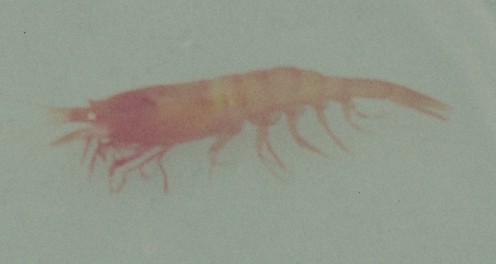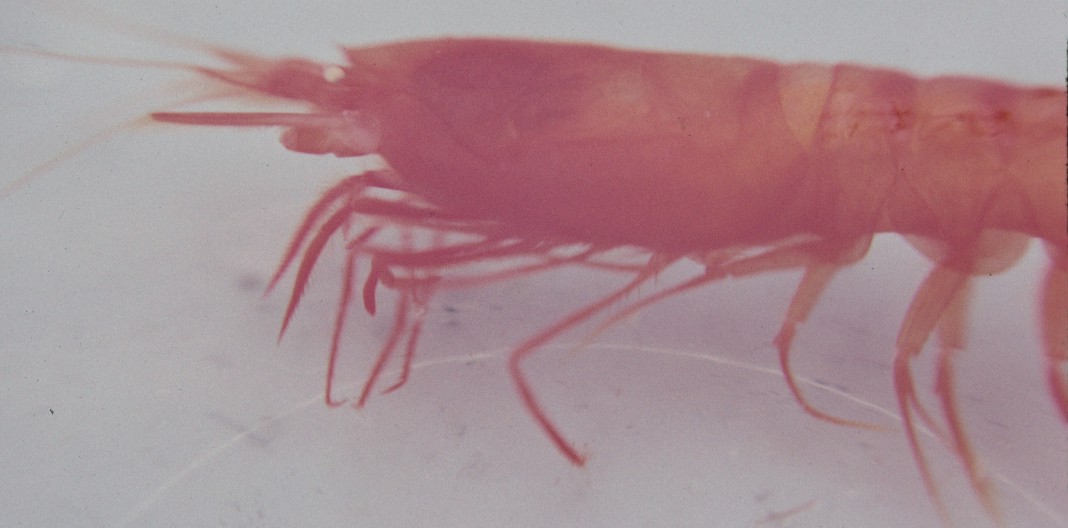Hymenodora gracilis Smith, 1886Common name(s): |
|
| Synonyms: |  |
| Phylum Arthropoda
Subphylum Crustacea Class Malacostraca Subclass Eumalacostraca Superorder Eucarida Order Decapoda Suborder Pleocyemata Infraorder Caridea (true shrimp) Family Oplophoridae |
|
| Hymenodora gracilis from 2000-2500 m depth 100 mi off Pt Conception, CA. Total length about 5-6 cm. | |
| (Photo by: Dave Cowles, 1993) | |
How to Distinguish from Similar Species: Hymenodora frontalis has a longer rostrum which extends up to or beyond the distal end of the antennal peduncle. H. glacialis has no podobranch on the epipodite of maxilliped 2 and has no V-shaped groove on the side of the carapace.
Geographical Range:
Depth Range: Bathypelagic
Habitat: Bathypelagic
Biology/Natural History:
| Return to: | |||
| Main Page | Alphabetic Index | Systematic Index | Glossary |
References:
Dichotomous Keys:Chace, 1986
Kozloff 1987, 1996
Wicksten, 2009
General References:
Scientific Articles:
Chase,
Fenner A., 1986. The Caridian Shrimps (Crustacea:
Decapoda)
of the Albatross Philippine Expedition, 1907-1910, Part 4:
Families
Oplophoridae and Nematocarcinidae. Smithsonian Contributions
to Zoology
Number 432. Paperback, 82 pp.
Wasmer, Robert A., 1967. Bathypelagic shrimps (Penaeidea and
Caridea)
from the eastern North Pacific. M.S. thesis, Walla Walla
College,
College Place, WA. 86 pp.
Web sites:
General Notes and Observations: Locations, abundances, unusual behaviors:

A closeup of the same individual as above. Notice the amber
eye,
which has very little pigment, and the thin, filmy exoskeleton through
which the animal's yellowish muscles can be seen.
Authors and Editors of Page:
Dave Cowles (2006): Created original page